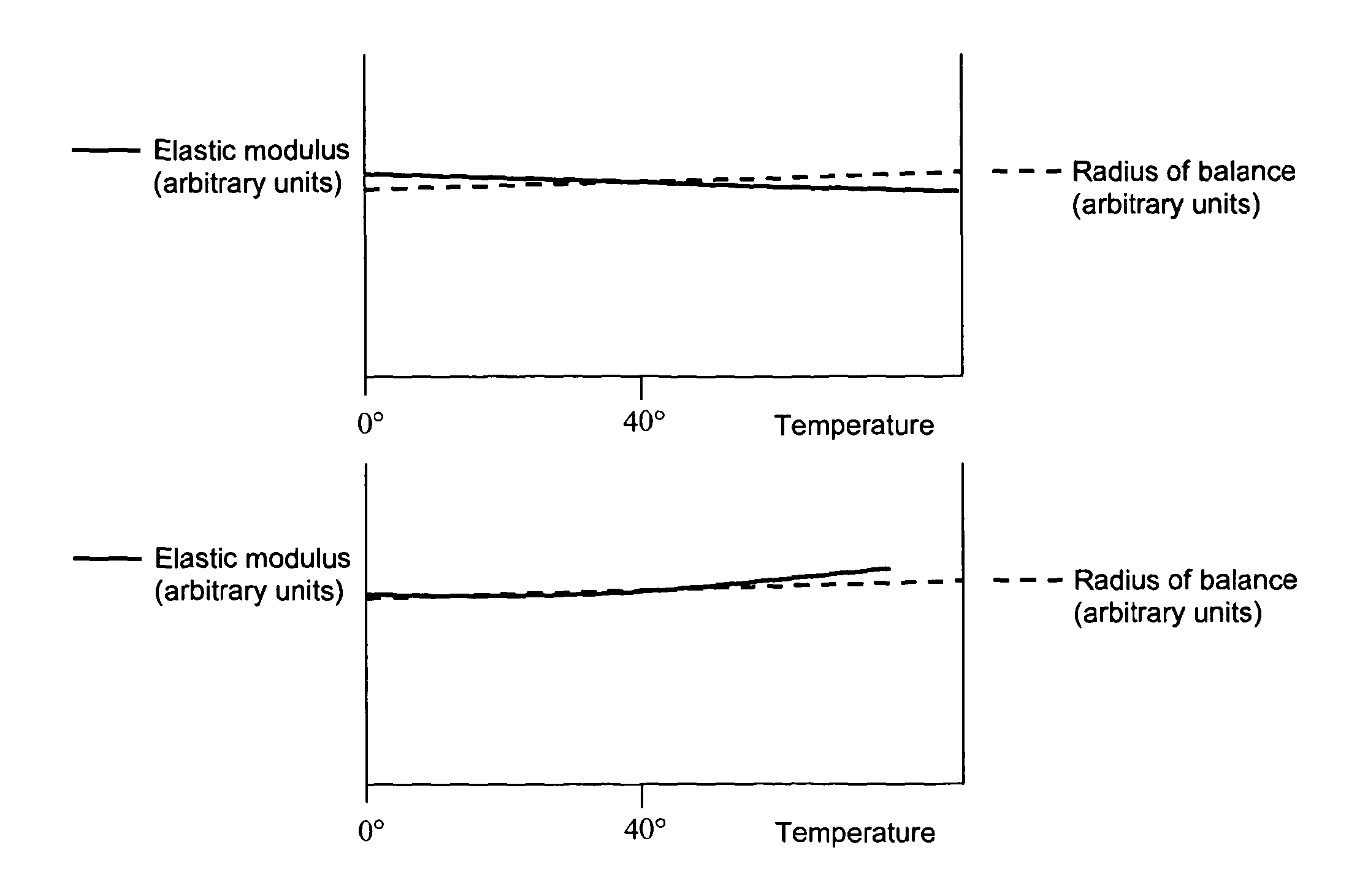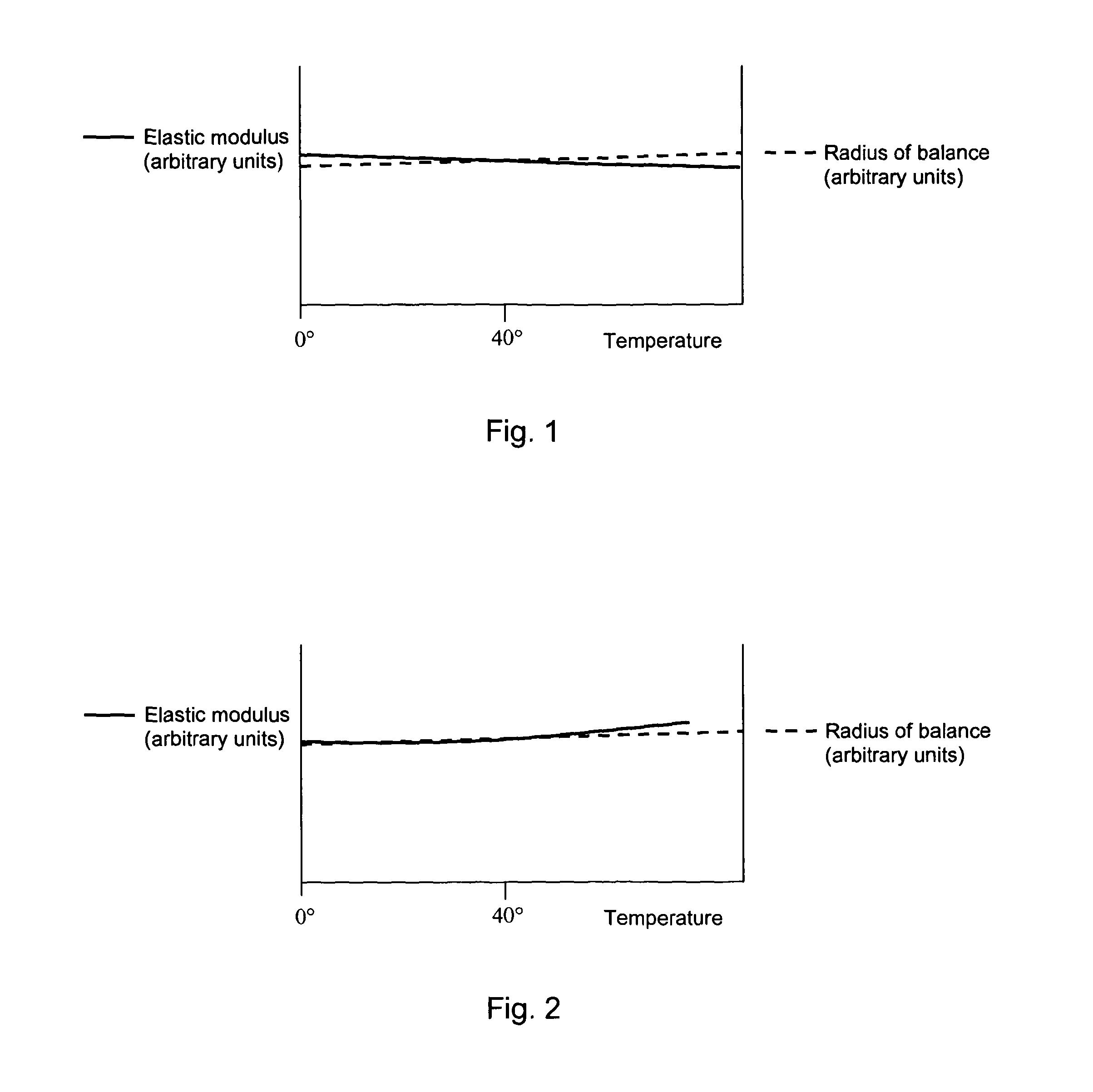Oscillator spring composition and method for fabricating an oscillator spring
a technology of oscillator spring and oscillator spring, which is applied in the direction of clockwork protection, ceramic shaping apparatus, domestic applications, etc., can solve the problems of limited knowledge of materials with limited coefficients of expansion, limited thermal expansion research for new materials, compounds or alloys, etc., and achieves precise proportion control, increased stiffness, and enhanced composites. the effect of matrix characteristics
- Summary
- Abstract
- Description
- Claims
- Application Information
AI Technical Summary
Benefits of technology
Problems solved by technology
Method used
Image
Examples
Embodiment Construction
[0031]In an embodiment of the invention described below, an oscillator spring is made from a piece of amorphous (i.e. vitreous) carbon mixed with (in this case coated with) crystalline silicon dioxide.
[0032]Silicon dioxide can be both amorphous (non-crystalline) or crystalline in structure. Both structures display an abnormal (i.e. positive) thermal evolution of elastic modulus to at least 1700 K.
[0033]The amorphous carbon used in the embodiment begins as a polymer precursor. Following forming of the polymer precursor to a desired shape, the silicon dioxide is applied. However, for polymer precursor of suitable viscosity, the silicon dioxide may be intermixed before the shape-forming step is performed. In this embodiment, the proportion of silicon dioxide additive to carbon is about 4.5 mol % in the final mixture.
[0034]After the precursor (i.e. pre-phase-transformed host material) and silicon dioxide (additive) have been mixed and formed into the required shape, the mixture is heate...
PUM
| Property | Measurement | Unit |
|---|---|---|
| temperature | aaaaa | aaaaa |
| temperature | aaaaa | aaaaa |
| temperature | aaaaa | aaaaa |
Abstract
Description
Claims
Application Information
 Login to View More
Login to View More - R&D
- Intellectual Property
- Life Sciences
- Materials
- Tech Scout
- Unparalleled Data Quality
- Higher Quality Content
- 60% Fewer Hallucinations
Browse by: Latest US Patents, China's latest patents, Technical Efficacy Thesaurus, Application Domain, Technology Topic, Popular Technical Reports.
© 2025 PatSnap. All rights reserved.Legal|Privacy policy|Modern Slavery Act Transparency Statement|Sitemap|About US| Contact US: help@patsnap.com



